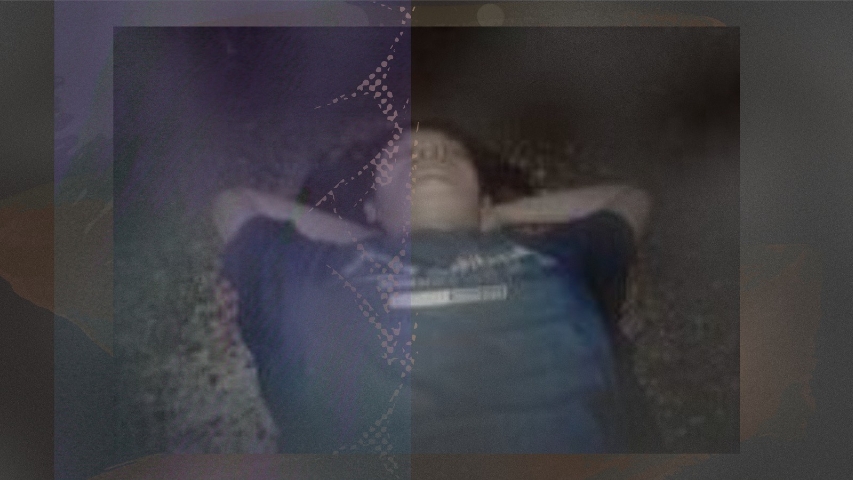
RETROSPECTIVE: CINEMA, CONSCIOUSNESS AND TIME
by Devdutt Trivedi March 2 2025, 12:00 am Estimated Reading Time: 11 mins, 53 secsExploring Shumona Goel’s experimental cinema through fragmented time, sensory aesthetics, and urban modernity, this analysis connects her work to Bergsonism, quantum mechanics, and avant-garde filmmaking, redefining cinematic perception beyond Bollywood and traditional Art House norms. Devdutt Trivedi writes…
Shumona’s experimental films challenge cinematic conventions by deconstructing durationality, sound, and fragmented imagery, creating a unique sensorial experience. Rooted in avant-garde aesthetics, her work aligns with global filmmakers like Stan Brakhage and Peter Hutton while subverting Bollywood’s narrative structures. Her exploration of kitsch as sublime, inspired by Apichatpong Weerasethakul and post-structuralist thought, highlights cinema’s intersection with quantum mechanics, physics, and perceptional consciousness. Through films like Family Tree, I Am Micro, and An Old Dog’s Diary, she interrogates urban modernity, the politics of space, and patriarchal cinematic norms. This deep dive into her filmic language offers a critical lens on contemporary experimental cinema, making it essential for cinephiles, scholars, and those interested in the evolution of cinematic expression.
Shumona showed Nikhil Arolkar and me her 20-minute film Atreyee in 2007. I recently rewatched it at the end of 2024. A lot has happened since then...
The central, articulated, and often violent disagreement among cinematographic practitioners in Bombay revolves around the relationship between space and time. Mani Kaul and his pupils take Henri Bergson’s durée to an extreme, culminating in the ten-minute opening shot of Amitabh Chakraborty’s Kaal Abhirati. Two comments in this regard: for three consecutive days, I saw a copy of Leonard Lawler’s The Challenge of Bergsonism with Mani Kaul at the office; and my professor, Nathanaël (Nathalie Stephens), once remarked: “David, if you use Bergson as the conceptual methodology in your next paper, I will have to fail you.”
However, there exists a school of filmmaking in Bombay that is closer to the American avant-garde, where students from Bard and CalArts cultivate an urban, English-speaking aesthetic. This approach is characterized by jagged editing, where duration transforms into ephemerality, aligning with Gaston Bachelard’s critique of Bergson, as articulated in The Dialectic of Duration. Bachelard speaks of the momentary and the ephemeral as an affirmation of Chronos—passing time—whereas durée aligns with Aion, or time as a static whole. Experimental filmmakers manipulate time in a fragmented manner, so that the signification of space is repeatedly disrupted—almost nullified—belonging instead to a larger spatial transformation that aligns more with history, and by extension, socio-economic and political realities, rather than dialectics or metaphysics. This cinema does not pose the classic cinematographic question: What is reality?
Filmmakers such as Shumona, Ashim Ahluwalia, Kabir Mohanty, Ashish Avikunthak, Bernd Lützer, and cinematographers like Setu and, most notably, K.U. Mohanan—one of the great maestros of cinematography of our time, anywhere in the world—were part of an experimental film scene in a city otherwise dominated by Bollywood. This space no longer exists, though one occasionally gets a taste of it when Gurpal Singh and Pankaj Sudhir Mishra (the model in Naukar Ki Kameez) screen films or curate rare DVDs that I have recently excavated.
Beyond that, Elroy once organized a screening of Vishnu Mathur’s Pehla Adhyay. Though engaging, it lacked the polemical discourse that challenges a director. Conversations with artists should be confrontational, not pacified; a film screening discussion is meant to be argumentative—if not outright combative—in order to interrogate how much the director has sacrificed for the cinematograph. This culture has disappeared, much like the post-screening of Satah Se Uthata Aadmi, where the audience nearly assaulted Kaul. Such reactions now only surface at FTII, when students protest a film selected for a prestigious festival. I consider such arguments the norm—something I have personally experienced—having been rebuked after a lecture at FTII, where a student dismissively told me I needed to watch Jurassic Park again.
In this regard, I recall hearing about a screening of Uski Roti, where Mr. Kaul, in his introduction, pointed out the location of the theatre exits and urged the audience to use them as soon as possible.

My contribution has been an out-of-sync sound screening I organized at Max Mueller Bhavan of Duvidha, which I informed Mr. Kaul about. He was upset, although he pretended to be interested in the technocracy of digital film files and their conversion glitches. Another instance was the screening of Om Dar B Dar from a poor VCD-VHS copy, where Kiran Rao stood at the side, watching the entire film standing, while Kamal arrived an hour late and sat on the floor. Iyesha and I informed the guests seated in the chair next to him to slide one seat to the right, as the person seated on the floor happened to be the director of the film. Swaroop began the post-screening discussion with his trademark opening remark, posed as a question: “Can anyone tell me the story of this film?”
Also notable was the disenchantment among Bombay's experimental filmmakers with Apichatpong Weerasethakul, whose aesthetic of kitsch-as-sublime was easily replicable in Bombay, given Bollywood’s ample subversion of signifiers and images. This aesthetic is evident in the installations of Vishal Rawley, who subverted a sculpture of the peacock by integrating Bollywood songs, playing on the word mor (peacock) in the lyrics. In this sense, the remix culture of Om Dar B Dar, with sonic images representing the cosmic as fragmented in the song Rana Tigrina, already serves as a precursor to Apichatpong’s fragmented temporalities in his films set within an a-temporal natural landscape.
Notably, in Payal Kapadia’s new film, this emphasis on a-temporal corporeality is brought out in the public urination sequence and in the depiction of the lovers’ bodies engaged in sex, transforming the body itself into a signifier devoid of an immaterial consciousness.
To digress, one can analyse a sequence from Apichatpong’s early short film Anthem, where the final scene features a circular tracking shot in bright yellow within an indoor badminton court. As the 32mm lens executes a 360-degree trolley movement, the dance set to a techno score becomes increasingly jagged, with the pitch of the music rising. Eventually, Apichatpong’s camera tracks to players engaged in a badminton match at the far end of the court. However, as the tracking shot continues, more elements—dancers, referees—enter the frame, adding density to the image, creating an integrated visual approach. Yet, while these elements accumulate, the higher musical pitches and subverted sublime moods act subtractively. Apichatpong’s aesthetic method involves adding to subtract—the refrain serving as an aesthetic sublime—while simultaneously affirming that cinema is not high art but kitsch. This is a level of cinema that, in today’s era, only Apichatpong achieves. I observe this when cineastes of the 20th century nod knowingly at the mention of his name and remark the same thing: that he can achieve things with the cinematograph that they never could, making them only guides, mentors, or professors in comparison.
Atreyee encapsulates the modern Indian experience through the English language. The protagonist, Atreyee, moves from Calcutta to Bombay and must navigate the male-dominated world of brokers and tenants while engaging with loneliness. The film fragments Atreyee’s everyday reality into multiple variations of the same space, constructing an any-space-whatever that generates a material cinema. Through celluloid, it creates a vision of cinema as destroyed space, rather than as magnified time consciousness. Particularly notable is the shot of a railway ticket, where the ticket numbers correspond to elements of Atreyee’s life, spanning from the 1990s to 2003—the year of the film’s creation.
The final wedding sequence in Atreyee serves as the film’s Event, which Shumona described as an absent event, one that brings no transformation. In other words, finding a companion and getting married is not presented as a solution to life’s problems. The urban Indian experience—specifically Bombay—within Atreyee is shaped by a post-colonial reality in which English functions as the primary Indian language. That said, it is not a film likely to be embraced by Shumona’s literary contemporaries, such as Arundhati Roy, Vikram Seth, or Vikram Chandra. The absence of the Event in the film aligns with the concept of encounter as swirl, relating to Being, a notion explored in Studies in Continental Thought by Indiana University Press, in its new translation of Martin Heidegger’s The Event.
Shumona takes Rushdie’s Bombay in Satanic Verses—his best novel, which he is very eager to turn into pop-nonsense—and assumes that there exists a static bourgeois culture in Bombay. This culture, characterized by its use of English, possesses a highly specific cinematographic sensorial experience, one that is absent in Bollywood cinema and even among Art House directors shooting in Bombay. For example, Shumona shuts off and turns on sound to allow the flux of pop music to enter and exit as kitsch, effectively dismantling the notion of durationality celebrated by the Bergsonist Indian Art House directors. The abrupt, jagged editing and the seemingly random entry and exit of sound create a continuity within discontinuity, producing a fragment-as-multiplicity approach, where each part negates the Whole while simultaneously repeating itself, generating a kind of cosmic resonance.
In this sense, Shumona confronts Bergsonism as the status quo of male chauvinism, addressing the elephant in the room: patriarchy. This is ostensibly the subject of the film, yet the experience of its textures, colours, and the unpredictability of its soundtrack constructs an is-ness, making experimental cinema engage with the confusion between thing and thought, as well as thing as thought. This idea finds validation in the quantum mechanics of Niels Bohr and Heisenberg, as well as in the parallel frames of simultaneity used to spatialize time in Albert Einstein’s Theory of Relativity. Recently, when students were dissatisfied with my lecture, a senior professor at the college remarked that she had “studied cinema and sympathized with my efforts, as cinema as a subject was immensely difficult and came closest to physics, particularly quantum mechanics and thermodynamics.”
A similar instance occurred years ago when, with the advent of YouTube, a physicist posted his responses to Ustad Shahid Parvez’s alaap on sitar in Raga Bageshree, employing terms such as flux, entropy, and multiplicity. None of these terms were incorrect, yet they were being applied from the perspective of a scientist rather than an artist.
I have had the most conversations about cinema with Shumona, more than with anyone else, and I have introduced her to some of my rare favourites: Antonioni’s L’Eclisse, with its famous negative-space sequence shot in Mussolini’s NU District in Rome; Jean-Luc Godard’s Germany Year Ninety Zero; and most notably, Alain Robbe-Grillet’s Trans-Europe Express, which features the famous post-structuralist sequence where the protagonist correctly identifies the first object but then assigns arbitrary, unrelated signifiers to subsequent objects, suggesting the divergence between language and speech.
While writing the script An Ancient Curse—which I insist to Shumona requires more funding than is currently available—I observe her scepticism toward my formalist, step-by-step methodological approach, particularly my use of fixed-distance shot entropy, which she perceives as lacking agency or potency. The fundamental questions I pose—ranging from defining spatial composition to What is the Self?—fail to account for the multiplicity of decision-making on a real shoot, where the sheer number of factors to consider is overwhelming. That said, Jean Renoir’s advice to Satyajit Ray comes to mind: Show only what is necessary, say few things in a film, but do those few things well, rather than overloading the mise-en-scène.
Shumona’s work is distinct yet resonates with that of her sister, Sujata, who, in a performance, danced to the kitsch Bollywood number Saare Haseen Yahan Nache Nache. Through her movements, however, the dance becomes more powerful than the packaged music itself, subverting the supposed distinction between kitsch Bollywood and Bharatanatyam, in which Sujata is formally trained.
In her piece Lady, Sujata uses the beat of a drum mimicking Bhangra to create robotic movements that capture the mechanization of the everyday in feminism. The performance distinguishes between signifiers such as woman, lady, and girl by aligning them with routine activities—waking up, bathing, commuting to work, and performing office tasks.
Shumona’s best work, Family Tree, explores her own genealogy in Harrisburg, yet it features a remarkable expanded cinema projection: an interview with her father, Ram Goel, recounting his struggles as a brown NRI in Pennsylvania. The footage almost resembles a psychoanalytic procedure, and, upon deeper analysis, familiar Lacanian jargons—popularized by Slavoj Žižek—become apparent. Most notably, the film inverts the expected transference of the affection-image as a close-up, instead producing a counter-transference between Mr. Goel and the viewer.
Shumona’s other films—I Am Micro, An Old Dog’s Diary, and her current project—extend this exploration. In her latest work, she adapts the relationship between the script we wrote (An Ancient Curse) and the audience, allowing for a dynamic interplay where any viewer can interpret a connection between the film’s randomized images and the textual meaning-making process. This approach precisely engages with structuralism, yet through the unstructured nature of avant-garde film.
Fundamentally, Shumona’s cinematographic images—akin to those of Stan Brakhage, Jonas Mekas, and, most notably, Peter Hutton—embody a perceptional consciousness. In Shumona’s case, this manifests as micro-ephemeral, evincing a deliberate disdain for meaning, much like the experience of reading a detailed synopsis of a Hollywood film before viewing it—where, with story and connotation removed, all that remains is the intensity of residual matter.
For this aesthetic to function, the spectator must accept that the modernity of urbanity is what makes cinema a productive medium—an assertion that aligns exactly with a similar statement made by Wim Wenders.





-173X130.jpg)
-173X130.jpg)
-173X130.jpg)
-173X130.jpg)

-173X130.jpg)
-173X130.jpg)
-173X130.jpg)